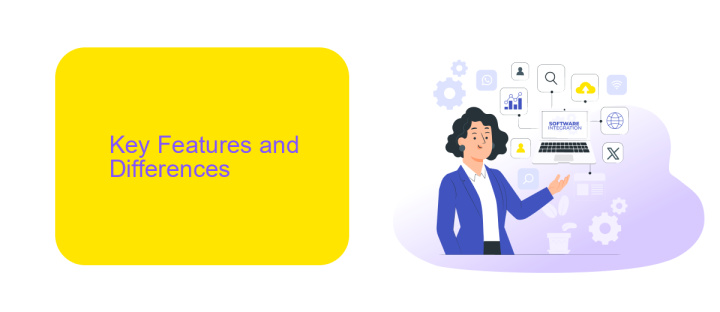Microsoft Flow Vs Nintex
When it comes to automating workflows and enhancing productivity, Microsoft Flow (now known as Power Automate) and Nintex are two leading platforms that often come into consideration. Both offer robust features and capabilities, but choosing the right one for your organization can be challenging. This article provides a comparative analysis of Microsoft Flow and Nintex to help you make an informed decision.
Introduction
In today's rapidly evolving digital landscape, businesses are constantly seeking efficient ways to automate workflows and enhance productivity. Two prominent tools in this domain are Microsoft Flow and Nintex. Both platforms offer robust solutions for automating tasks, integrating services, and streamlining operations. However, they cater to different needs and have unique features that set them apart.
- Microsoft Flow, now known as Power Automate, is part of the Microsoft Power Platform and integrates seamlessly with Microsoft 365 applications.
- Nintex, on the other hand, is renowned for its advanced workflow capabilities and is widely used for complex business processes.
- Both platforms support a wide range of integrations, including popular services like ApiX-Drive, which facilitates seamless data transfer and automation across various applications.
Choosing the right tool depends on your specific business requirements, existing infrastructure, and desired outcomes. In this article, we will compare Microsoft Flow and Nintex in detail, exploring their features, benefits, and potential drawbacks to help you make an informed decision.
Key Features and Differences

Microsoft Flow, now known as Power Automate, offers a user-friendly interface that allows users to automate workflows between various applications and services. It integrates seamlessly with a wide range of Microsoft products like Office 365, Dynamics 365, and Azure. One of its key strengths is the extensive library of pre-built templates that make it easier for users to get started quickly. Additionally, Power Automate supports advanced features like AI Builder, which helps in creating intelligent workflows using artificial intelligence.
Nintex, on the other hand, is renowned for its robust workflow automation capabilities and deep integration with SharePoint. It offers a comprehensive suite of tools for process management, including advanced form creation and document generation. Nintex also excels in providing detailed analytics and reporting features, which help organizations monitor and optimize their workflows. While both platforms offer integration capabilities, services like ApiX-Drive can further enhance these integrations by providing additional connectivity options between various third-party applications, making it easier to create more complex and customized workflows.
Integrations and Ecosystem

When comparing Microsoft Flow and Nintex, it's essential to consider their integrations and ecosystem. Both platforms offer extensive integration capabilities, but they differ in terms of scope and ease of use.
- Microsoft Flow integrates seamlessly with over 300 services, including Office 365, Dynamics 365, and third-party apps like Salesforce and Google Workspace.
- Nintex, on the other hand, provides robust integration options with platforms such as SharePoint, Office 365, and various enterprise systems through its extensive connector library.
- ApiX-Drive can further enhance integration capabilities for both platforms by providing a user-friendly interface to connect and automate workflows across multiple services without coding.
Ultimately, the choice between Microsoft Flow and Nintex will depend on your specific integration needs and the existing ecosystem within your organization. While Microsoft Flow offers a broader range of native integrations, Nintex excels in providing deep, enterprise-grade connectivity. Utilizing tools like ApiX-Drive can bridge any gaps and streamline the integration process, ensuring a cohesive and efficient workflow environment.
Pricing and Licensing

When comparing Microsoft Flow and Nintex, understanding their pricing and licensing structures is crucial for making an informed decision. Microsoft Flow, now known as Power Automate, offers a range of pricing plans that cater to different business needs. These plans include a free tier with limited features, as well as premium plans that start at per user per month.
Nintex, on the other hand, provides a more complex pricing model based on the number of workflows and users. Their pricing starts at 0 per month for the Standard plan, which includes up to 10 workflows. For more extensive needs, the Enterprise plan offers unlimited workflows and additional features, but the pricing is available upon request.
- Microsoft Flow (Power Automate) Free Plan: Basic features, limited runs
- Microsoft Flow Premium Plans: Starting at /user/month
- Nintex Standard Plan: 0/month for up to 10 workflows
- Nintex Enterprise Plan: Custom pricing for unlimited workflows
Both platforms offer robust workflow automation capabilities, but the choice between them may depend on your specific requirements and budget. For businesses looking to integrate various services seamlessly, tools like ApiX-Drive can further enhance the capabilities of either platform by providing easy-to-use integration solutions.
Conclusion
In conclusion, both Microsoft Flow and Nintex offer robust solutions for automating workflows and enhancing productivity. Microsoft Flow, now known as Power Automate, integrates seamlessly with the Microsoft ecosystem, making it an ideal choice for organizations heavily invested in Microsoft products. Its user-friendly interface and extensive template library allow users to create complex workflows without extensive coding knowledge.
On the other hand, Nintex excels with its advanced workflow capabilities and powerful form-building tools. It provides a more comprehensive suite of features for enterprises requiring sophisticated automation solutions. For those looking to integrate various applications and services, tools like ApiX-Drive can further enhance the functionality of both platforms by simplifying the integration process. Ultimately, the choice between Microsoft Flow and Nintex will depend on your specific business needs, existing infrastructure, and long-term automation goals.
FAQ
What are the main differences between Microsoft Flow and Nintex?
Which tool is better for non-technical users?
Can both tools integrate with third-party applications?
How do the pricing models of Microsoft Flow and Nintex compare?
What options are available for integrating these tools with other services?
Do you want to achieve your goals in business, career and life faster and better? Do it with ApiX-Drive – a tool that will remove a significant part of the routine from workflows and free up additional time to achieve your goals. Test the capabilities of Apix-Drive for free – see for yourself the effectiveness of the tool.

